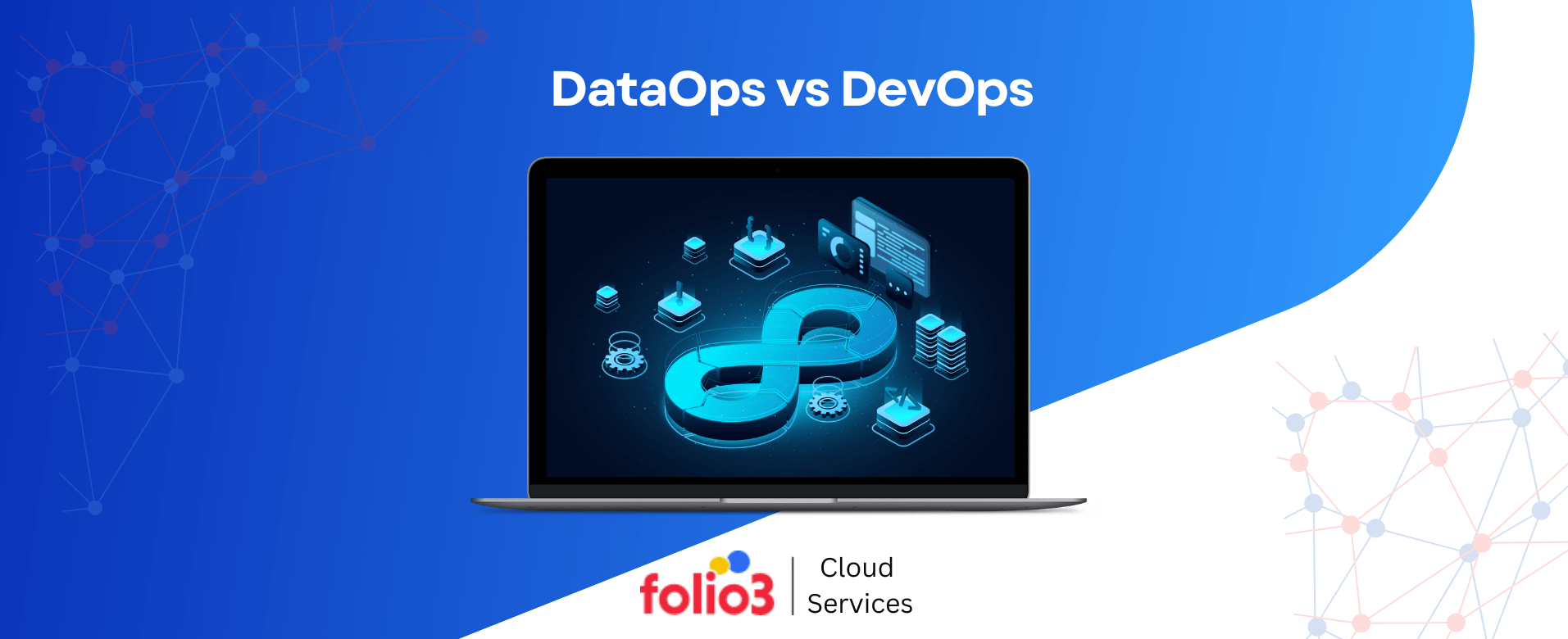As technology continues to evolve at a breakneck pace, organizations are on a transformative journey toward embracing cloud computing. Two prominent models leading this shift are Cloud First vs Cloud Native, each offering different paths for businesses aiming to harness the power of the cloud.
The “Cloud First” strategy, initially championed by government agencies and now widely adopted by enterprises, prioritizes cloud-based services over traditional on-premises infrastructure, driving a significant shift in how organizations approach their IT needs.
In contrast, “Cloud Native” represents a more modern and dynamic approach grounded in principles and practices designed to fully exploit cloud computing’s capabilities. This includes focusing on containerization, microservices, automation, and agility, allowing businesses to achieve unprecedented scalability and flexibility.
Understanding the difference between these two paradigms is crucial for companies looking to leverage the full potential of the cloud.
In this blog, we’ll delve into the differences that set Cloud First and Cloud Native apart, helping you determine which approach best aligns with your organization’s goals and infrastructure.
What is Cloud First?
Cloud First is a strategic approach where organizations prioritize cloud-based solutions over traditional on-premises systems for new projects and IT initiatives. It involves migrating existing applications and infrastructure to the cloud as part of a broader digital transformation.
Objective
Cloud First’s main objectives are to modernize IT infrastructure, reduce costs, and increase operational flexibility using cloud services. Engaging with cloud consulting services can help ensure that this transition aligns with your strategic goals and leverages the full potential of cloud technologies.
Focus
Cloud First focuses on transitioning existing systems to the cloud and prioritizing cloud-based solutions for new deployments. It aims to reduce reliance on on-premises infrastructure while utilizing cloud computing’s scalability and flexibility.
Benefits
- Cost Savings: Lower total cost of ownership (TCO) than maintaining on-premises infrastructure.
- Operational Flexibility: Easier to deploy and manage resources in the cloud, allowing for more agile operations.
- Scalability: Access to scalable cloud resources that can be adjusted based on demand.
- Reduced Maintenance: Cloud providers handle much infrastructure management, reducing the burden on internal IT teams.
Characteristics
- Migration Focus: Emphasizes moving existing applications and systems to the cloud.
- Broad Directive: Applies to new and existing projects, prioritizing cloud solutions across the organization.
- Cost-Conscious: Evaluates cloud adoption in the context of cost efficiency and budget constraints.
- Incremental Transition: Often involves a phased approach to migrating workloads to the cloud.
Approach
Cloud First takes a top-down approach, prioritizing cloud services across all IT projects. This can involve both lift-and-shift migrations of existing applications and the development of new cloud-based solutions, often guided by managed cloud services to ensure smooth and efficient deployment.
Flip Side
- Limited Optimization: Migrated applications may only partially exploit cloud-native features, leading to suboptimal performance.
- Vendor Lock-In: There is a risk of becoming dependent on a single cloud provider, which could limit flexibility and increase costs over time.
- Security and Compliance Challenges: Ensuring data security and compliance requirements are met in the cloud can be complex.
- Initial Disruption: Migration legacy systems to the cloud can cause disruptions and require significant refactoring.
What is Cloud Native?
Cloud Native is an approach to designing, building, and running applications that fully exploit the advantages of cloud computing. It emphasizes microservices architecture, containerization, and continuous integration/continuous deployment (CI/CD) practices.
Objective
The primary objective of Cloud Native is to create scalable, resilient, and agile applications that can rapidly adapt to changing business needs and technological advancements.
Focus
Cloud Native focuses on developing applications specifically for the cloud environment from the ground up. It leverages cloud-native technologies such as containers, microservices, and orchestration tools like Kubernetes to achieve flexibility and efficiency.
Benefits
- Scalability: Easily scale applications horizontally to handle increasing loads.
- Resilience: Enhance fault tolerance with built-in recovery and self-healing capabilities.
- Agility: Rapid development and deployment of features, improving time-to-market.
- Portability: Applications are highly portable across different cloud environments.
- Cost Efficiency: Optimizes resource usage, reducing costs through efficient scaling and containerization.
Characteristics
- Microservices Architecture: Applications are broken down into more minor, independent services.
- Containerization: Use of containers to package and deploy applications consistently across environments.
- Automation: Heavy reliance on automation tools for deployment, scaling, and management.
- CI/CD: Continuous integration and deployment practices for faster, more reliable updates.
- Cloud-Agnostic: Designed to run efficiently across multiple cloud providers.
Approach
Cloud Native takes a bottom-up approach, where applications are designed specifically to operate in the cloud. This often requires a cultural shift towards DevOps practices and a strong focus on automation and continuous improvement.
Flip Side
- Complexity: The microservices architecture can introduce complexity in management and orchestration.
- Learning Curve: Requires significant investment in training and adopting new tools and practices.
- Initial Costs: The transition to Cloud Native may involve higher upfront costs in development, tooling, and infrastructure.
4 Key differences Between Cloud Native & Cloud First
Cloud First vs Cloud Native represent two distinct strategies with unique benefits and considerations. Understanding these differences is crucial for organizations aiming to optimize cloud adoption and application development.
Let’s explore 4 key differences between these approaches:
1. Differences in Approach and Strategy
The “Cloud First” approach primarily involves transitioning existing systems and processes to the cloud. Organizations adopting this strategy prioritize cloud solutions when developing new projects or modernizing legacy systems.
It’s a broad directive to reduce reliance on on-premises infrastructure by favoring cloud-based alternatives.
In contrast, “Cloud Native” is a strategy and a philosophy for building applications. This approach emphasizes designing systems specifically for the cloud, using cloud-first principles from the outset rather than merely migrating existing applications.
2. Differences in Application Architecture
In a Cloud-First environment, applications are often migrated from on-premises infrastructure to the cloud with minimal changes to their architecture.
However, these applications may still follow traditional monolithic designs, which can limit their ability to exploit cloud capabilities fully.
On the other hand, Cloud Native applications are built using microservices architecture, where each function is broken down into more minor, independently deployable services.
This architecture allows for greater modularity, enabling developers to update, scale, and manage individual services without affecting the entire application.
3. Differences in Scalability and Resilience
Cloud First applications, while hosted in the cloud, may still need more scalability and resilience due to their traditional architecture. Scaling these applications can be challenging, and their design may limit their ability to recover from failures.
Conversely, Cloud-Native applications are inherently scalable and resilient. They are designed to scale horizontally, with each microservice able to handle varying loads independently.
Additionally, Cloud-Native applications are built with fault tolerance in mind, often incorporating automated recovery processes to ensure continuous availability.
4. Differences in Flexibility and Portability
The underlying architecture of the migrated applications often constrains the flexibility of a Cloud First approach.
While these applications benefit from cloud infrastructure, they may still be tied to specific environments or platforms, limiting their portability.
In contrast, Cloud Native applications are designed flexibly and portably as core principles. These applications can be easily deployed across multiple cloud environments or moved between cloud providers through containerization and cloud-agnostic technologies, offering organizations greater freedom in their cloud strategy.
Factors to Consider While Choosing Cloud First
When deciding whether to adopt a “Cloud First” strategy, several factors that can impact your organization’s cloud journey must be considered.
This approach, which prioritizes cloud services for new projects and modernization efforts, can be a powerful way to streamline operations and enhance flexibility.
However, it’s not a one-size-fits-all solution, and understanding how it fits your organization’s needs is vital.
Below are the critical factors to consider when opting for a Cloud-First approach:
Legacy Systems and Applications
One of the most significant considerations when choosing a Cloud First strategy is the nature of your existing systems and applications. If your organization has a substantial investment in legacy systems, assessing their compatibility with cloud environments is essential.
Legacy applications may require significant refactoring to function effectively in the cloud, which could be resource-intensive.
Therefore, understanding the feasibility and effort required to migrate these systems is critical in the decision-making process. Cloud First could be viable if your applications can be migrated with minimal disruption.
Budget and Cost Considerations
Cost is always a significant factor in any IT decision. When considering a Cloud First strategy, evaluating your organization’s budget constraints and cost-saving goals is essential.
Cloud-based solutions often provide a more predictable and lower total cost of ownership (TCO) than on-premises infrastructure.
However, the initial migration costs must also be considered, including refactoring applications and retraining staff. Organizations must conduct a thorough cost-benefit analysis to ensure the financial investment aligns with their long-term objectives.
Resource Availability and Skills
The successful adoption of a Cloud-First strategy depends heavily on the availability of skilled personnel. Managing cloud deployments requires specific skills that may need to be added to your current IT team.
It’s essential to assess whether your organization has the expertise to manage cloud services or if additional training or hiring of specialized cloud professionals will be necessary.
If resources are limited, investing in upskilling your current workforce or partnering with cloud service providers for managed services might be required.
Scalability and Flexibility Needs
One of the primary benefits of cloud computing is its scalability. A Cloud First approach can offer scalability for organizations expecting significant growth or fluctuating workloads to accommodate these changes.
The cloud allows for easy expansion or reduction of resources based on demand, which can be particularly advantageous for businesses with varying operational needs.
Additionally, evaluating how flexible your chosen cloud solution is in adapting to your organization’s evolving requirements will help ensure that it can support long-term growth.
Data Security and Compliance Requirements
Data security and regulatory compliance are paramount considerations when choosing a cloud strategy. Different industries have specific data storage, processing, and access requirements, and ensuring that any cloud provider you select complies with these standards is essential.
Critical steps are Assessing your data’s sensitivity and understanding the security measures cloud providers offer, such as encryption and access controls.
Moreover, organizations must consider how data residency laws and compliance frameworks like GDPR, HIPAA, or PCI-DSS impact their cloud strategy.
Vendor Lock-In Concerns
Vendor lock-in is a potential risk with any cloud strategy, and it’s particularly relevant in a Cloud-First approach where the organization becomes reliant on a single provider for multiple services.
It is essential to evaluate the risks associated with vendor lock-in and explore strategies to mitigate them, such as opting for open standards or multi-cloud architectures.
Operational Efficiency and Agility
A Cloud-First strategy can significantly enhance operational efficiency and agility by enabling faster application and service deployment. With cloud infrastructure, organizations can reduce the time it takes to bring new products to market, streamline operations, and respond quickly to changing business needs.
Factors to consider while choosing Cloud Native
Choosing a “Cloud Native” approach requires a deep understanding of how this strategy aligns with your organization’s needs, technical capabilities, and long-term objectives.
Unlike the “Cloud First” strategy, which focuses on migrating existing systems to the cloud, Cloud Native involves designing applications to take full advantage of cloud environments.
Below are the key factors to consider when deciding if a Cloud Native approach is right for your organization:
Application Architecture and Modernization
A core aspect of Cloud Native is its focus on microservices architecture, where applications are composed of loosely coupled, independently deployable services. Before adopting this approach, assessing your existing applications’ complexity and suitability for modernization is essential.
If your current applications are monolithic, transitioning to a microservices architecture may require significant refactoring.
However, if your organization is looking to build new applications or modernize existing ones, Cloud Native provides a robust framework for creating scalable, maintainable, and agile systems.
Development and Deployment Speed
Cloud-native approaches emphasize rapid development and deployment cycles, often supported by continuous integration and deployment (CI/CD) pipelines.
This allows organizations to deliver new features and updates faster, staying ahead of the competition.
Scalability and Resilience Requirements
Scalability and resilience are fundamental benefits of Cloud-Native architectures. With container orchestration platforms like Kubernetes, Cloud-Native applications can automatically scale to handle varying loads and recover from failures without manual intervention.
If your organization requires applications that can effortlessly scale to meet high demand or operate in a high-availability environment, Cloud Native is an ideal choice.
This approach ensures that your applications remain responsive and reliable, even under peak load conditions or in the event of infrastructure failures.
DevOps Culture and Practices
Cloud Native development is closely tied to DevOps practices, emphasizing collaboration between development and operations teams, automation, and continuous improvement.
Before adopting a Cloud Native strategy, assessing your organization’s readiness for this cultural shift is essential.
Tooling and Ecosystem Compatibility
The Cloud Native ecosystem has tools and frameworks to support modern application development, from container orchestration to monitoring and logging.
When considering a Cloud Native approach, evaluate the availability and compatibility of these tools with your existing technology stack.
Resource Efficiency and Optimization
Cloud Native architectures allow resource optimization by running applications in lightweight, isolated containers that can be easily scaled up or down based on demand.
This can lead to significant cost savings, as you only pay for the resources you use.
Innovation and Competitive Advantage
Cloud Native architectures empower organizations to innovate rapidly and maintain a competitive edge. With the full potential of cloud environments, businesses can experiment with new features, technologies, and business models with minimal risk.
Cloud First or Cloud Native – Which One Should You Choose?
While “Cloud First” focuses on transitioning existing systems to the cloud and maximizing cost efficiency, “Cloud Native” emphasizes building applications specifically designed for the cloud, offering enhanced scalability, flexibility, and agility.
Each approach has benefits and challenges, so carefully evaluating your organization’s needs and long-term objectives is essential.
For tailored guidance on optimizing your cloud strategy, consider Folio3’s expert cloud services.
Our solutions are designed to help you seamlessly transition to cloud-based operations or build innovative, cloud-native applications that drive growth and efficiency.
Discover how Folio3 can support your journey to the cloud and improve your business capabilities.














